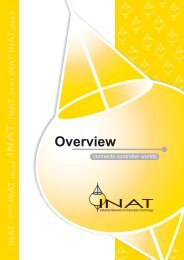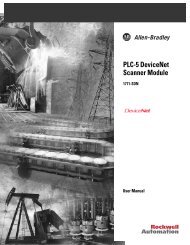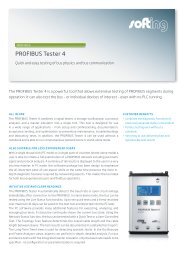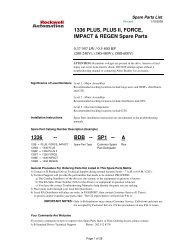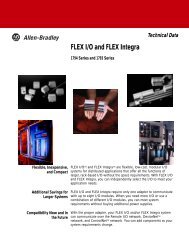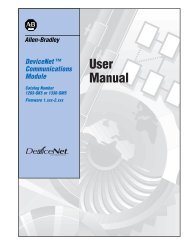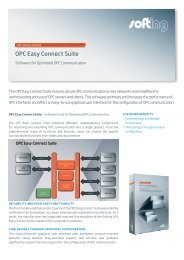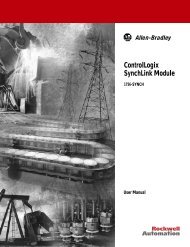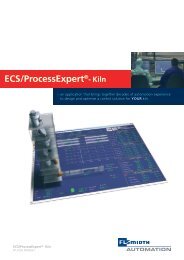Overview of DeviceNet Stack Light
Overview of DeviceNet Stack Light
Overview of DeviceNet Stack Light
Create successful ePaper yourself
Turn your PDF publications into a flip-book with our unique Google optimized e-Paper software.
<strong>DeviceNet</strong> Information B-10<br />
Class Code 009 (0x09): Discrete Output Point Object<br />
The Discrete Output Point (DOP) Object models discrete outputs in a product. You can use<br />
this object in applications as simple as an actuator or as complex as a discrete I/O control<br />
module. There is a separate instance for each discrete output available on the device.<br />
Class Attributes<br />
None<br />
Instance Attributes<br />
Table B.18<br />
Attribute Access Name Type Value<br />
3 Get/Set Value BOOL State <strong>of</strong> Output<br />
4 Get Status BOOL ➊<br />
128 (0x80) Get/Set Mode BYTE —<br />
129 (0x81) Get/Set Module_Type BYTE —<br />
➊<br />
0 = OK<br />
1 = Burnout, Module Not Present<br />
Common Services<br />
Table B.19<br />
Service Code Class Instance Service Name<br />
14 (0x0E) No Yes Get_Attribute_Single<br />
16 (0x10) No Yes Set_Attribute_Single<br />
Class Code 015 (0x0F): Parameter Object<br />
Use <strong>of</strong> the Parameter Object provides a known, public interface to a device’s configuration<br />
data. In addition, this object also provides all the information necessary to define and<br />
describe each <strong>of</strong> a device’s individual configuration parameters.<br />
This object allows a device to fully identify a configurable parameter by supplying a full<br />
description <strong>of</strong> the parameter, including minimum and maximum values and a human-readable<br />
text string describing the parameter.<br />
Publication 855T-UM001B-EN-P September 2000




